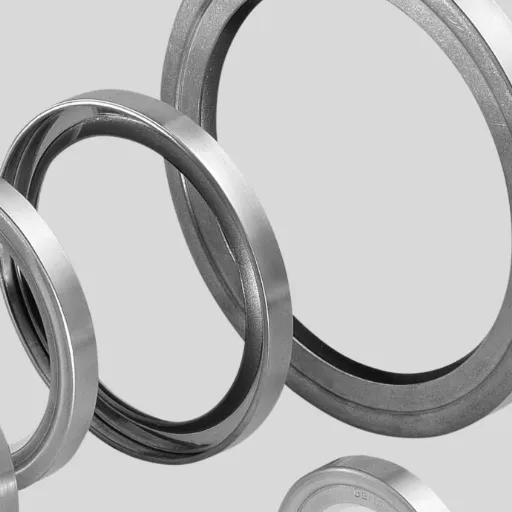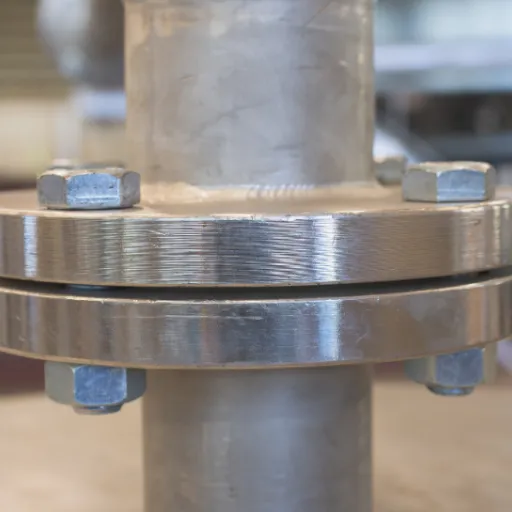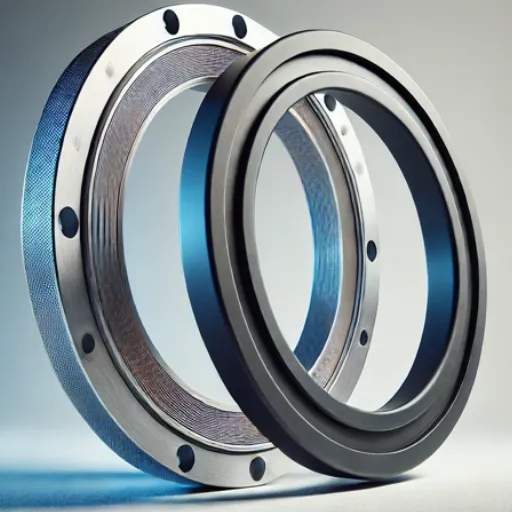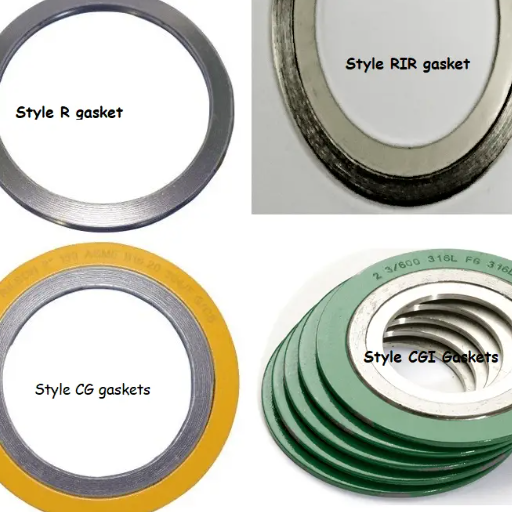Industrial applications demand safety, efficiency, and reliability – hence, the sealing must be secure and leak-proof. This is one of the main reasons behind the usage of flange gaskets to achieve the perfect seal. But because there is a plethora of gaskets designed for various materials, temperatures, pressures, and operational conditions, the selection can sometimes become daunting.
This comprehensive guide offers you simplifying tools and basic knowledge to make better-informed decisions. By the end, you will learn about:
- Factors to be considered when selecting gaskets
- Types of gaskets available for different applications
- How to choose a gasket for a flange withyour particular flange application
- Best practices for installation and maintenance
Understanding Gaskets and Flanges

A gasket and a flange work together to seal two mating surfaces from leaky pipelines or machinery, whether dealing with liquids or gases. The interconnection is provided by the flange, while the gasket sits between the two surfaces, compensating for irregularities on the surface.
What is a Gasket?
Gaskets are mechanical seals used to fill the space between two or more mating surfaces to prevent leakage of gases or liquids under varying conditions. They are manufactured from various materials including:
- Rubber – Flexible and cost-effective for low-pressure applications
- Silicone – Excellent temperature resistance
- Metal – High-pressure and high-temperature applications
- Cork – Traditional sealing material for specific applications
- PTFE – Chemical resistance and non-stick properties
Industry Trend: Current industrial advances demonstrate the need for state-of-the-art gaskets to cater to today’s industries. Spiral-wound gaskets and sheet gaskets with special coatings are increasingly used because of their capability to withstand harsh environments.
The Role of Flanges in Sealing
Flanges are critical components in sealing systems, serving to join pipes, valves, pumps, and other equipment. They provide secure and leak-proof joints, which becomes crucial for:
- High-pressure systems
- Very high temperature applications
- Hazardous substance handling
Types of Flanges and Their Gaskets

Different flange types require specific gasket selections to ensure optimal sealing performance. Here’s a comprehensive breakdown:
| Flange Type | Application | Recommended Gasket Types | Key Features |
|---|---|---|---|
| Weld Neck Flanges | High-pressure applications | Spiral wound, Ring-type joint gaskets | Superior strength, reduced turbulence |
| Slip-On Flanges | Low-pressure settings | Non-asbestos, Rubber gaskets | Easy installation, cost-effective |
| Blind Flanges | Pipeline closure | Spiral wound, Soft gaskets | Complete sealing, pressure-dependent |
| Socket Weld Flanges | Small diameter, high-pressure pipes | Ring gaskets, Spiral wound gaskets | Strong connections, minimal turbulence |
| Lap Joint Flanges | Systems requiring frequent disassembly | PTFE, Soft gaskets | Easy alignment, reusable |
| Threaded Flanges | Where welding is not feasible | Rubber, Non-asbestos gaskets | No welding required, versatile |
Overview of Flange Gasket Types
The selection of flange gaskets depends on multiple factors including working temperature, pressure, and chemical compatibility. Here are the main categories:
Metallic Gaskets
- Applications: High-pressure and high-temperature environments
- Materials: Stainless steel, copper, soft iron
- Advantages: Superior durability, stronger sealing capabilities
- Industries: Oil and gas, petrochemicals, power generation
Non-Metallic Gaskets
- Applications: Low-pressure systems, chemical resistance requirements
- Materials: Rubber, PTFE, compressed fiber
- Advantages: Cost-effective, easy installation, chemical compatibility
- Industries: Water treatment, food processing, pharmaceuticals
Semi-Metallic Gaskets
- Applications: Moderate pressure and temperature conditions
- Materials: Combination of metal and non-metal components
- Advantages: Balance of strength and flexibility
- Industries: General industrial applications
Specialized Gasket Types

Spiral Wound Gaskets Explained
Spiral wound gaskets provide a versatile sealing solution that offers an excellent balance between flexibility and strength. They are manufactured by alternately winding metal strips with filler material, providing high resistance to pressure and temperature.
Key Features:
- Accommodate temperature and pressure fluctuations
- Excellent recovery properties
- Wide range of applications
- Good adaptability to flange irregularities
Ring Type Gaskets (RTJ) and Their Uses
Ring Type Gaskets provide the best seal under the harshest pressure and temperature conditions. They are extensively used in:
- Oil and gas industry
- Petrochemical sector
- Refinery operations
- Offshore drilling rigs
- Pressure vessels
How RTJs Work:
- Compress under pressure
- Deform slightly to fill flange imperfections
- Ensure tight fit and prevent leaks
- Maintain seal integrity under harsh conditions
Factors to Consider When Selecting a Flange Gasket
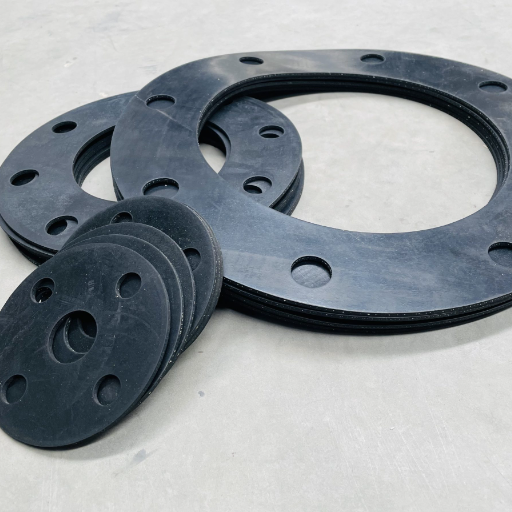
Several critical factors must be evaluated to ensure proper gasket selection:
Material Compatibility
Key Considerations:
- Chemical Compatibility: Analyze the type of fluid or gas the gasket will be exposed to
- Corrosion Resistance: Ensure the gasket material can withstand corrosive fluids
- Temperature Resistance: Verify capability to withstand extreme temperatures
- Flange Compatibility: Consider flange type and surface finish
Temperature and Pressure Ratings
| Gasket Material | Temperature Range | Pressure Rating | Best Applications |
|---|---|---|---|
| PTFE | -200°C to +260°C | Low to Medium | Chemical processing |
| Graphite | -200°C to +450°C | High | High-temperature applications |
| Stainless Steel | -250°C to +800°C | Very High | Extreme conditions |
| Rubber (EPDM) | -40°C to +150°C | Low to Medium | Water systems |
Best Practices for Gasket Installation

Preparation of Flange Surfaces
- Clean thoroughly: Remove dirt, grease, old gasket material, and corrosion
- Inspect for defects: Check for warping, scratches, or damage
- Verify surface finish: Ensure smooth and uniform texture
- Repair if necessary: Address any surface irregularities
Proper Gasket Installation Techniques
- Alignment: Position gasket properly with bolt holes and sealing surfaces
- Bolt Pattern: Follow cross or star pattern for even pressure distribution
- Torque Control: Use calibrated torque wrench with gradual increases
- Avoid Over-tightening: Follow manufacturer’s torque specifications
- Final Inspection: Check for misalignment or protrusion
Testing the Seal Integrity
Proper testing ensures reliable sealing performance:
- Visual Inspection: Check for misalignment or irregularities
- Pressure Testing: Gradually increase pressure to specified limits
- Leak Detection: Monitor for pressure drops or visible leaks
- Corrective Action: Address any issues immediately
Preventing Gasket Failure
Common Causes of Gasket Failure:
- Incorrect gasket selection for application
- Poor installation practices
- Inadequate surface preparation
- Over-tightening or under-tightening bolts
- Chemical incompatibility
- Exceeding temperature or pressure limits
Prevention Strategies:
- Careful assessment of operating conditions
- Proper material selection
- Following installation procedures
- Regular maintenance and inspections
- Adherence to manufacturer specifications
References
- Normandale Community College: Sealing Materials Require a Careful Choice
This article discusses the properties of elastomer gaskets and their application in sealing surfaces. - CiteSeerX (Pennsylvania State University): Practical Sealing for Common Gasket Materials and …
This document explores optimized torques for flange and bolt joints, ensuring minimal deformation. - Texas A&M University: Methods to Improve Process Safety
This resource provides insights into how hydrostatic pressure and flange design impact gasket performance. - Top Flange Gasket Suppliers in China
Frequently Asked Questions (FAQ)
What are the different types of flange gaskets available?
When it comes to selecting the flange gasket, it is imperative to have knowledge about the different flange gaskets available. Examples include full-face gaskets, spiral wound gaskets, and raised face gaskets. Each is used for different applications and has its own set of properties; for example, spiral wound gaskets are commonly employed for high-pressure applications, whereas full-face gaskets are meant to seal larger surfaces. Knowledge of how these gaskets perform under certain conditions, such as heat, or in combination with certain flange materials, will allow you to make an educated choice.
How does gasket thickness affect the sealing performance?
It may happen that gasket thickness is important in sealing performance. Thicker gaskets should respond better to compression and allow for the seal in conditions of higher bolt loads and flange pressure through competition to compress the gasket. But a thicker gasket might cause gasket failure if not compatible with flange faces. A thinner gasket can be enough under lower pressure and less severe applications. Thus, caution should be exercised in making gasket-thickness choices so that it fulfills the needs of a specific piping system.
What should I consider when selecting a flange gasket for elevated temperatures?
In selecting a gasket for high temperatures, special attention must be paid to the gasket material and the pressure rating at ambient temperature. Different gasket materials, such as PTFE or rubber, each have their own thermal resistance and operating characteristics. It is also necessary that the gasket be compatible with the fluid in the system so that it does not degrade. It is important to evaluate the maximum pressure as well as the operating temperature and pressure to ensure gasket reliability in an elevated temperature situation.
How do I choose the appropriate gasket material for a specific application?
Selecting the proper gasket materials implies understanding the fluid that it is going to seal, the working temperature and pressure, and also the sort of flange involved. Corrosive chemicals could require a material that is corrosion-resistant, whereas for gas pipelines, one needs to engage a material that decreases the possibility of fugitive emissions. Suppliers of gaskets often provide recommendations as to which materials do best in which situations, including the join between the flanges and the gasket compression required. Taking time to research and working with piping engineers would result in better choices for your applications.
What causes gasket failure, and how can it be prevented?
Reasons for gasket failure include unsuitable installation, selection of wrong gaskets for an application, and poor compression when setting the gasket. For a particular flange type and application, the right gasket should be selected to avoid leakage. Regular maintenance and inspection of the piping system also help in the early detection of wear or damage. Moreover, understanding the shortfalls of different gasket materials in combination with the fluid they intend to contain can considerably reduce the chances of failure.

